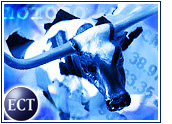Piloting an e-business from the corner office has proven to be too stiff a challenge for many chief executive officers.
To excel in the corporate top spot, technology executives must mix some unique aptitudes with the requisite leadership and management skills, according to analysts.
“We have learned from the naivete of many of the dot-com CEOs,” Jerry Wind, a professor at the Wharton School of the University of Pennsylvania, told the E-Commerce Times. “[E-business CEOs] have to be much more concerned with the validation of their assumptions and business models.”
Successful technology bosses must be thick-skinned yet receptive, nimble yet resolute, and diplomatic yet commanding, analysts agreed.
Turnover at the Top
In January, the technology sector saw 12 CEO turnovers, second only to the financial sector, which had 13, according to outplacement firm Challenger, Gray and Christmas.
Overall, CEO departures increased almost 20 percent in January, to their second-highest level in seven months.
Why the carnage? Wind said many e-business leaders are facing a much more hostile environment than their traditional industry counterparts, so they must show greater commitment and a willingness to deal with adversity.
“The ‘e’ has become almost negative,” he added. “It is tougher for e-business CEOs to get funding and to get the attention of large clients.”
Change Managers
Today’s top-notch executives must be prepared to transform their organizations to respond to economic and technological adversity, according to Wind.
Short-term profits proved too lofty a goal for many e-businesses, but Amazon.com chief Jeff Bezos was one executive who met the challenge, according to analysts.
“It is a tribute to Amazon’s management team that the company has made changes in its business philosophy and operational model that take it away from being a pure-play e-tailer,” Yankee Group analyst Paul Ritter told the E-Commerce Times.
Indeed, Amazon owes its profitability to partnerships with brick-and-mortar retailers like Borders, Circuit City, and Toys “R” Us, which accounted for 25 percent of its revenue last quarter, Wind noted.
“It was like taking the tires off while going 100 miles per hour,” he said of Amazon’s metamorphosis.”It required cutting fat but developing new muscle, keeping investors happy with short-term performance while still investing in growth.”
New World Order
The transformation that Amazon has undergone is one that most e-businesses must face, according to Wind, because of the ongoing convergence of the virtual and physical business worlds.
Another boss who has exhibited the agility and diplomacy necessary to execute such transformation is Steve Case of AOL Time Warner, Wind said.
Case has created a meaningful integration of old-world and new-world companies and has bridged the resulting culture divide to forge the world’s largest media corporation, he noted.
Lou Gerstner of IBM, while not quarterbacking megamergers, has shown similar dexterity during his nine-year tenure by deemphasizing personal computers and transforming his company into a software and services powerhouse, Wind added.
Whitman Sets Leadership Benchmark
Perhaps the only e-business that has not faced such transformational challenges is auction kingpin eBay, whose CEO, Meg Whitman, has created a new benchmark for e-commerce prowess, analysts agreed.
From the outset, Whitman has remained steadfast in her fiscal discipline and diplomatic in her management style, according to eBay spokesman Kevin Pursglove.
“Meg committed to running eBay by old-economy rules, “Pursglove told the E-Commerce Times. “While [other e-commerce companies] competed for first-mover advantage and market share, Meg ensured that expenses did not outpace revenue and that every dollar invested returned at least a dollar.”
Whitman’s resolve has paid off, literally. EBay generated 2001 revenue of US$748.8 million, representing 74 percent annual growth, and pro format net income of $137.5 million, representing 135 percent year-over-year growth.
Sounding Board
So, how can e-business CEOs emulate this kind of success?
Analysts suggested forming decision support networks comprised of unbiased, diverse advisors to examine ideas and strategies.
“Many [technology executives] do things that have been reinforced in past [scenarios],” Wind said. “But they need a forum that allows them to challenge assumptions and redesign strategies.”
























































Social Media
See all Social Media